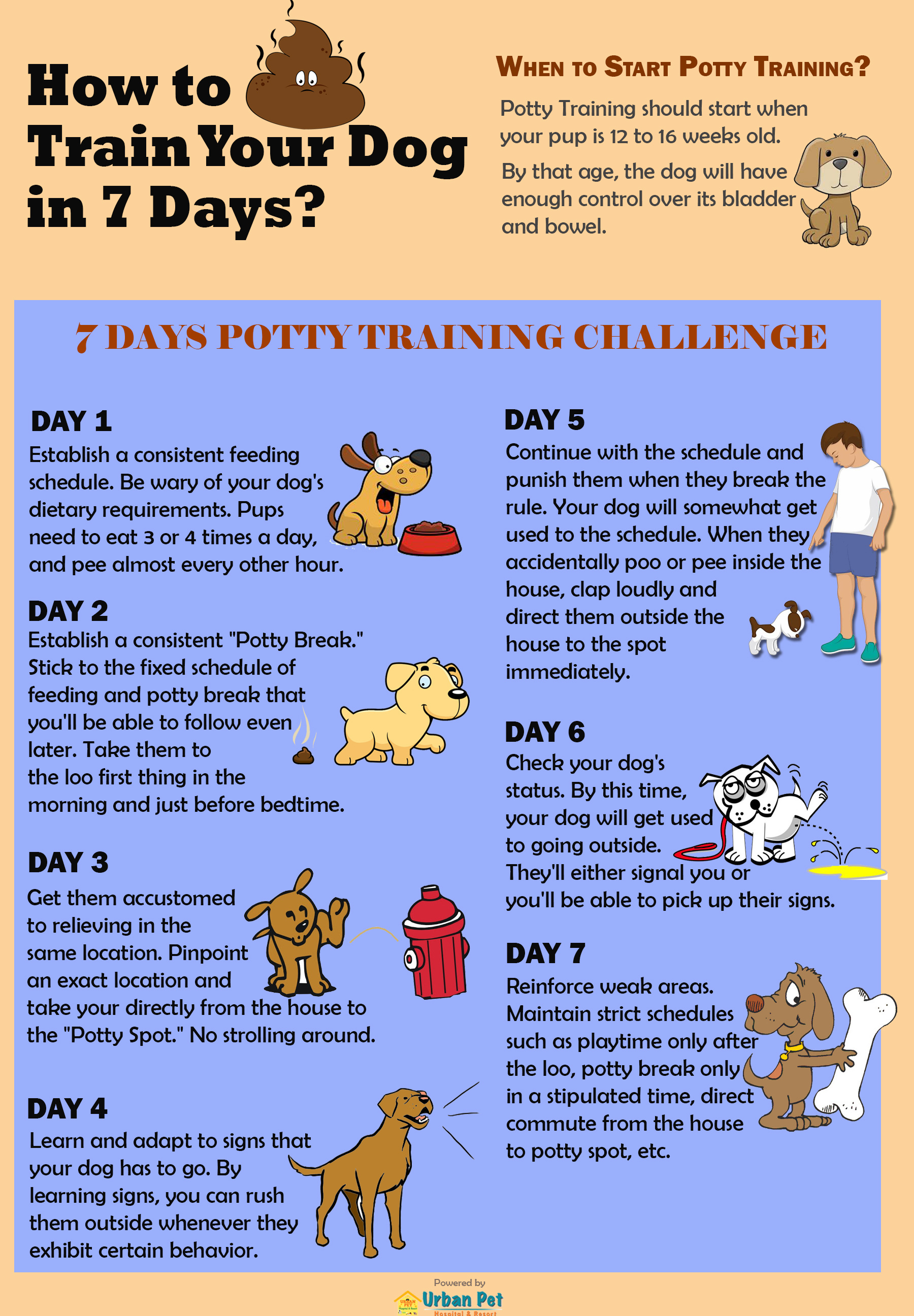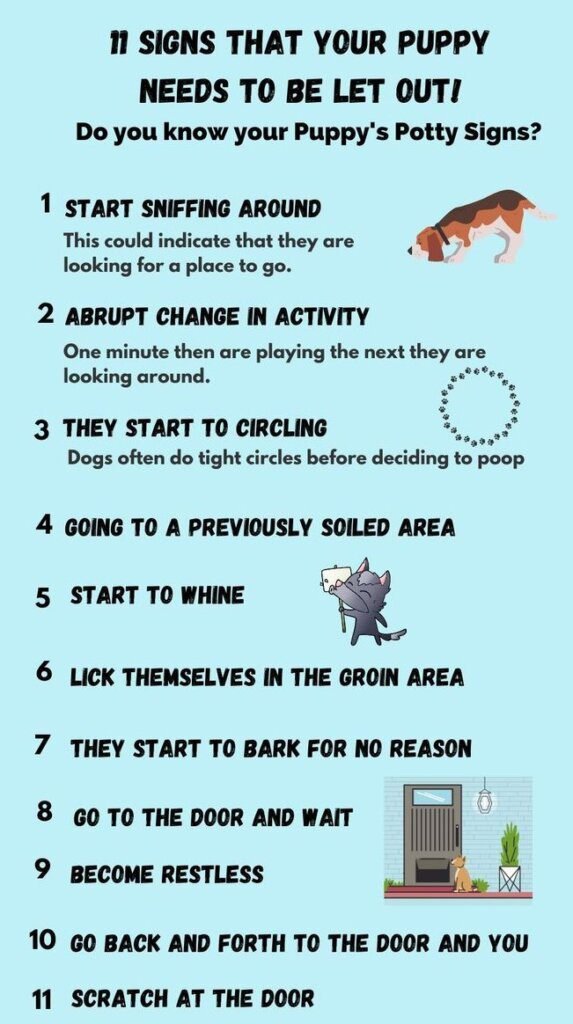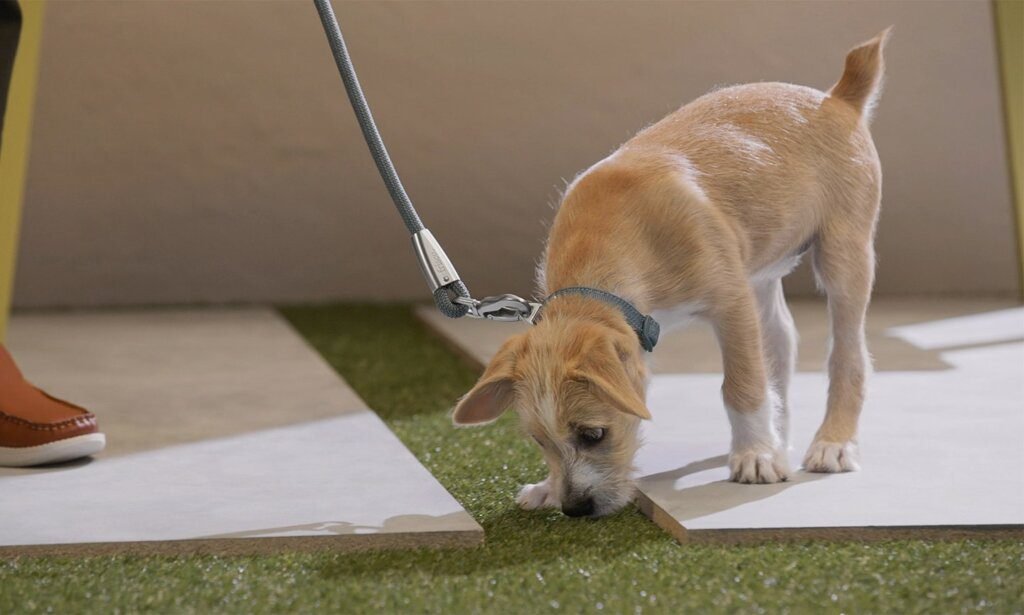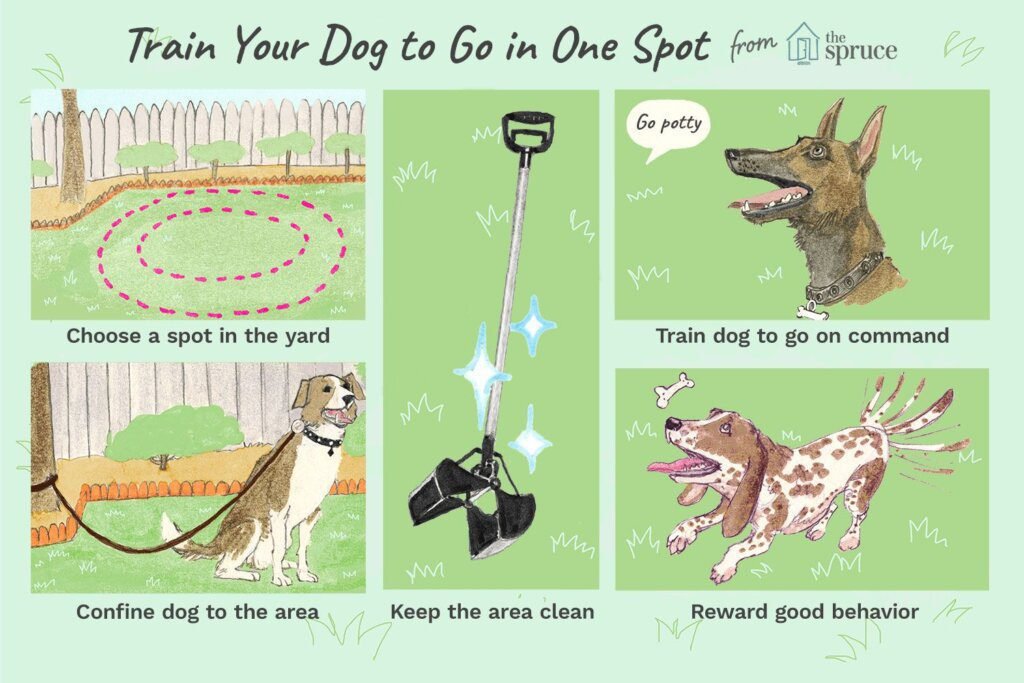Table of Contents
So you’ve brought home a new furry member to the family, and now it’s time to tackle the exciting task of house training. Whether you’ve adopted a rambunctious little bundle of joy or picked up a shy and timid pup, this article will provide you with some helpful tips and tricks to successfully house train your new four-legged friend. From establishing a consistent routine to celebrating small victories, you’ll discover effective methods to ensure that your puppy learns where and when to take care of their business. Get ready for a rewarding journey of bonding and teaching as you embark on the adventure of house training your precious puppy.

Preparation for House Training
Create a designated potty area
Before you bring your new puppy home, it’s important to set up a designated area for them to relieve themselves. This could be a specific spot in your yard or a pee pad indoors. By creating a consistent potty area, you will help your puppy learn where they should go when nature calls.
Gather necessary supplies
To make house training a smooth process, gather all the necessary supplies beforehand. You’ll need puppy pads, a crate or playpen, cleaning supplies for accidents, treats for positive reinforcement, and a leash for taking your puppy outside. Being prepared will make the whole house training journey much easier for both you and your furry friend.
Establish a routine
Dogs thrive on routine, so it’s crucial to establish a consistent daily schedule for your puppy. This includes designated feeding times, regular potty breaks, and specific play and exercise periods. A structured routine will not only help with house training but also promote your puppy’s overall well-being and behavior.
Understanding Puppy’s Behavior
Recognize signs of needing to eliminate
To effectively house train your puppy, it’s essential to recognize the signs that they need to go potty. These signs may include restlessness, sniffing around, circling, or squatting. By being attentive and observant, you can quickly identify when your puppy is indicating that they need to eliminate and take them to the designated potty area.
Understand the importance of consistency
Consistency is key when it comes to house training your puppy. Consistently taking them to the same potty area, using the same command, and reinforcing positive behavior will help them understand what is expected of them. Dogs thrive on routine and clear expectations, so it’s crucial to be consistent throughout the entire house training process.
Learn positive reinforcement techniques
Positive reinforcement is a powerful tool for house training your puppy. Rewarding your puppy with treats, praise, and affection when they eliminate in the designated potty area will reinforce the behavior you want to see. Positive reinforcement creates a positive association with going potty in the right place, making your puppy more motivated to repeat the behavior.
Crate Training
Choose an appropriate crate size
When crate training your puppy, it’s important to choose a crate that is neither too big nor too small. The crate should be large enough for your puppy to stand up, turn around, and lie down comfortably, but not so spacious that they can eliminate in one corner and sleep in the other. A properly sized crate will help teach your puppy bladder control and create a cozy den-like space.
Introduce the crate gradually
Introducing your puppy to the crate should be done gradually to ensure they associate it with positive experiences. Start by placing treats or their favorite toys inside the crate, allowing them to explore it at their own pace. Gradually, you can begin feeding them their meals in the crate with the door open, then progress to closing the door for short periods while they eat. This gradual introduction will help your puppy feel comfortable and secure in their crate.
Use positive association techniques
To make the crate a positive and welcoming space, use association techniques. Provide your puppy with a comfortable bed or blanket, and place their favorite toys and treats inside the crate. Additionally, you can use calming scents such as lavender or chamomile to create a soothing environment. By associating the crate with positive experiences, your puppy will be more willing to spend time in it and view it as their safe haven.
Potty Training Basics
Establish a feeding schedule
Establishing a feeding schedule for your puppy is essential for successful potty training. Feed your puppy at the same times each day, ideally two to three times a day, to regulate their digestive system and make potty breaks more predictable. Consistency in feeding times will help you anticipate when your puppy needs to eliminate and ensure their bladder and bowel movements are regular.
Control water intake
Controlling your puppy’s water intake is crucial for house training. While it’s important to keep your puppy hydrated, monitoring their water intake will help regulate their need to eliminate. Avoid leaving out a full water dish all day long and instead offer water at specific times, such as after meals and during supervised playtime. This controlled water intake will aid in preventing accidents inside the house.
Take puppy outside frequently
To reinforce the habit of going potty outside, it’s important to take your puppy outside frequently. This includes right after meals, after waking up from a nap, after playtime, and before bedtime. By taking your puppy to the designated potty area consistently, you’ll increase the chances of successful elimination and reinforce the desired behavior.

Taking Puppy Outside
Choose a specific exit route
To make the process smoother for both you and your puppy, choose a specific exit route when taking them outside to eliminate. This helps establish a routine and minimizes distractions along the way. By consistently using the same exit route, your puppy will learn to associate it with going potty and will be less likely to get distracted from their goal.
Use a consistent command
Using a consistent command when taking your puppy outside to eliminate is important for effective communication. Choose a simple and clear command such as “go potty” or “do your business” and use it consistently every time you take your puppy to the designated potty area. By associating the command with the desired behavior, your puppy will learn to understand what is expected of them.
Reward successful elimination
When your puppy successfully eliminates in the designated potty area, it’s important to reward them as soon as they finish. Use verbal praise, give them a treat, and shower them with affection to reinforce the positive behavior. Timing is crucial, so make sure to offer the reward immediately after they finish eliminating to ensure they understand what they are being rewarded for.
Dealing with Accidents
Stay calm and avoid punishment
Accidents are bound to happen during the house training process, but it’s important to stay calm and avoid punishing your puppy. Yelling, scolding, or rubbing their nose in the mess will only confuse and frighten them. Instead, calmly clean up the accident without drawing attention to it and focus on reinforcing the desired behavior moving forward. Remaining calm will help your puppy feel safe and secure as they continue to learn.
Clean up accidents properly
When accidents occur, it’s crucial to clean them up properly to prevent lingering odors that may entice your puppy to eliminate in the same spot again. Use an enzymatic cleaner specifically designed for pet accidents to thoroughly clean the affected area. This type of cleaner will break down the odor-causing enzymes, ensuring that the area is fully cleaned and eliminating any scent that may attract your puppy back to that spot.
Learn from mistakes
Accidents are a part of the house training process, and it’s important to learn from them rather than get discouraged. Reflect on what may have led to the accident – maybe you missed a potty break or didn’t notice the signs of your puppy needing to go. By learning from your mistakes, you can make adjustments to your routine and management strategies, setting your puppy up for future success.

Nighttime House Training
Keep puppy’s sleeping area nearby
During the nighttime house training phase, it’s important to keep your puppy’s sleeping area nearby. This could be a crate placed in your bedroom or a designated space close to your bed. Keeping them nearby will help you hear any signs that they need to eliminate and allow you to promptly take them outside.
Set a nighttime routine
Establishing a nighttime routine is crucial for successful house training. Set a specific time for your puppy’s final potty break before bed, ensuring they have the opportunity to eliminate right before settling down for the night. Consistency and routine will help regulate your puppy’s body and make nighttime accidents less likely.
Take puppy out before bedtime
Before putting your puppy to bed, make sure to take them outside one last time to eliminate. This final potty break allows them to empty their bladder and reduces the chances of accidents during the night. Be patient and wait for them to finish before bringing them back inside to their sleeping area.
Managing Progress and Setbacks
Monitor and keep track of successes
To track your puppy’s progress and identify any patterns or issues, it’s helpful to monitor and keep track of their successes. Take note of successful eliminations, the frequency of accidents, and any specific triggers or circumstances that may lead to accidents. By keeping a log, you can better understand your puppy’s needs and make any necessary adjustments to their routine or training techniques.
Address any setbacks promptly
During the house training process, setbacks may occur. This could be due to changes in routine, illness, or other factors that may affect your puppy’s ability to hold their bladder. It’s important to address any setbacks promptly by reinforcing consistency, providing additional potty breaks, and closely monitoring your puppy’s behavior. With patience and consistent reinforcement, setbacks can be overcome.
Seek professional help if needed
If you find that house training is challenging or if you’re experiencing significant setbacks, do not hesitate to seek professional help. A certified dog trainer or behaviorist can provide guidance, tailor training techniques to your puppy’s specific needs, and offer additional support. Sometimes, a professional’s expertise can make a significant difference in successfully house training your puppy.

Training Outside the Home
Expose puppy to different environments
Once your puppy has mastered potty training within the confines of your home, it’s important to expose them to different environments. Gradually introduce your puppy to new outdoor locations, such as parks or sidewalks, where they can continue to practice their potty training skills. This exposure will help generalize their training and ensure they understand that the potty area is not limited to just one specific location.
Practice obedience commands outside
Training your puppy to obey commands outside of your home is vital for their overall obedience and safety. As part of their house training routine, take the opportunity to practice basic obedience commands, such as “sit,” “stay,” or “come,” while you’re outside. Incorporating obedience training into their potty breaks will reinforce their training and enhance their overall learning experience.
Gradually extend potty area
As your puppy becomes more comfortable and reliable with their potty training, you can gradually extend the designated potty area. Slowly increase the distance or the specific places within the outdoor space where you allow your puppy to eliminate. This expansion helps reinforce the concept that going potty is acceptable in various outdoor locations and not restricted to just one specific spot.
Transition to Freedom
Slowly increase puppy’s freedom in the house
Once your puppy has successfully mastered house training, it’s time to gradually increase their freedom within the house. Start by allowing them access to one room at a time while closely monitoring their behavior and potty habits. If accidents occur or if you notice any regression in their training, temporarily restrict their access and revisit the previous training steps. Slowly expanding your puppy’s freedom will ensure their continued success.
Supervise and monitor behavior
As you grant your puppy more freedom, it’s crucial to closely supervise and monitor their behavior. Keep an eye on their signals, take note of any restlessness, circling, or sniffing, which may indicate their need to go potty. If you cannot provide direct supervision, consider confining your puppy to a safe space or using a baby gate to prevent any accidents while you’re away.
Gradually remove indoor potty options
As your puppy becomes fully reliable with their house training, it’s time to gradually remove indoor potty options, such as pee pads or litter boxes. Start by reducing the number of indoor potty areas or removing them altogether, depending on your preferred method. This transition will encourage your puppy to rely solely on going potty outside and solidify their house training success.
Remember, house training a puppy requires patience, consistency, and positive reinforcement. With dedication and a clear routine, you can successfully teach your furry friend where to go potty and build a strong bond along the way. Enjoy the journey of helping your puppy become a well-mannered and house-trained member of your family!




